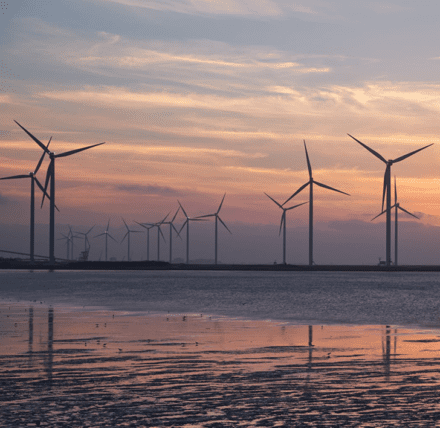


ScotWind leasing hailed as “truly historic” for Scotland
INSIGHTS
ScotWind leasing is hailed as “truly historic” for Scotland, but what does it mean for local communities?
In January Crown Estate Scotland, the public company set up by the Scottish Government to manage the land and property owned by the Queen in Scotland, announced the outcome of the application process for ScotWind leasing, Scotland’s first offshore wind leasing in more than 10 years.
In total 17 projects were chosen, following nearly 75 applications. Around £700m will be paid by those applications for the rights to develop specific areas of the Scottish seabed, with fees passed to the Scottish Government.
The 17 projects will cover more than 7,000km², with the potential to generate 25GW. Most of the sites are located on the east and north of Scotland, with one on the west. One site to the east of Shetland was offered for the auction, but was not allocated to any bidder.
Successful applications include BP Alternative Energy Investments, SSE Renewables, Shell New Energies, Scottish Power Renewables and Vattenfall, combining fixed and floating technologies.
The First Minister hailed the sale of the offshore wind projects as “truly historic”. However, some concerns have been raised.
The allocation of the sites has been criticised by RSPB Scotland, claiming it could “accelerate some species towards extinction in Scotland”. The Scottish Fisherman’s Federation (SFF) also raised concerns that Scotland’s fishing fleet may not be granted access to fishing grounds. In addition, SFF noted that whilst marine renewables do of course have a key part to play within Scotland’s transition to net zero emissions, the fishing industry will also play its part. The concerns raised by SFF and others in the fishing industry not only related to the areas of seabed that would be impacted by fixed turbines, but also the “even greater” spatial and co-existence problems that floating turbines created for the industry.
In Shetland, the local fishing industry may have breathed a sigh of relief following the leasing announcement, when it was confirmed that a significant area to the east of Shetland (NE1) was not going to be developed by the offshore wind industry, at least for the time being. Crown Estate Scotland did note that there was some interest in the site, however no applicant was successful in securing a lease for the area. Whilst the Shetland Fishermen’s Association welcomed this news generally, there was a recognition that other developments around Shetland were being discussed.
We understand that the bidders all had to demonstrate wider economic benefits such as job creation and supply chain creation. In addition to this, the issue of localised community benefit remains. There are already noises about what an “industry standard community benefit” might be for offshore wind leasing and whether the same principles which applied for onshore wind development may also apply.
In Shetland, for example, the Shetland Community Benefit Fund has been established in answer to the Viking wind farm project, and the Community Benefit Fund may see further opportunities in offshore.
Furthermore the Shetland Islands Council has already commented that the site to the east of Shetland not being allocated gives them more time to engage in discussions on community benefit becoming an industry standard. We would expect that the Island Councils in Orkney and the Western Isles may be considering whether an industry standard for community benefit can be achieved. The difficulty with offshore wind compared to onshore may be in precisely defining the community in question and how best to address community benefit.
It’s clear that offshore wind is a significant and viable sustainable energy option when it comes to Scotland’s net zero targets. However, it is important that all communities which are impacted by this form of production, share the benefits.
About the author
RELATED
CONTACT US
Call us for free on 0330 159 5555 or complete our online form below to submit your enquiry or arrange a call back.